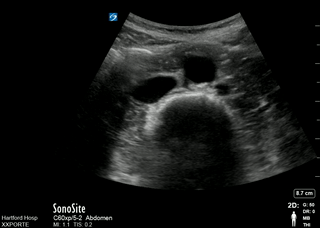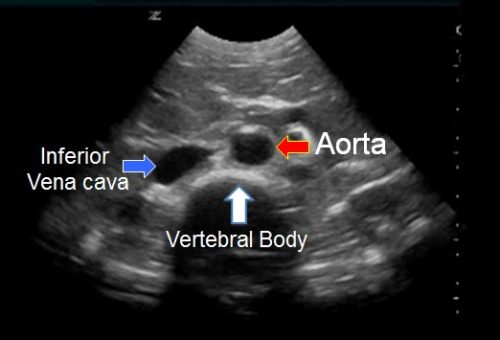30 year old male presents to ED with onset of right sided chest pain 2 hours ago. pain is pleuritic in nature and is associated with some Shortness of breath. His Vitals are HR 90, BP 130/70, RR 18, Sats 96 RA. He has history of primary spontaneous pneumothorax on right side about a year ago ,was treated with ICC insertion and subsequently resolved . Bedside ultrasound is performed and following images and clips are obtained.
Answer 1. First Clip is of left side of chest ( normal side) . It shows 2 rib shadows, with pleural interface as bright white line. We can appreciate “ant crawling ” effect over pleural interface which is actually lung sliding and indicates absence of pneumothorax. Small vertical flashing lines intermittently are also evident which are called Comet tail artefacts.
Remember lung sliding can be absent in chronic lung conditions e.g severe emphysema, bronchiectasis, intubated patient.
Second clip is of symptomatic right side. It again shows rib shadows with bright line ( pleural interface ) , but it is quite static as compared to other side and we can not appreciate ant crawling effect or lung sliding. Also there are no comet tail artefacts seen. This strongly indicates presence of pneumothorax on right side. There is also small movement coming towards centre like a curtain with breathing , it is called lung point.
Answer 2:
These images are taken with M mode. First image shows sea shore sign , and second image shows bar code sign. Barcode sign indicates pneumothorax but is not very sensitive or specific .
Answer : 3. This clip shows ” lung point” which is highly sensitive for presence of pneumothorax. It appears as a curtain moving towards middle as the patient breaths and represents normal lung sliding coming in contact with abnormal lung.
Summary:
Absence of lung sliding, and comet tail artefacts and presence of lung point strongly suggests presence of pneumothorax.


